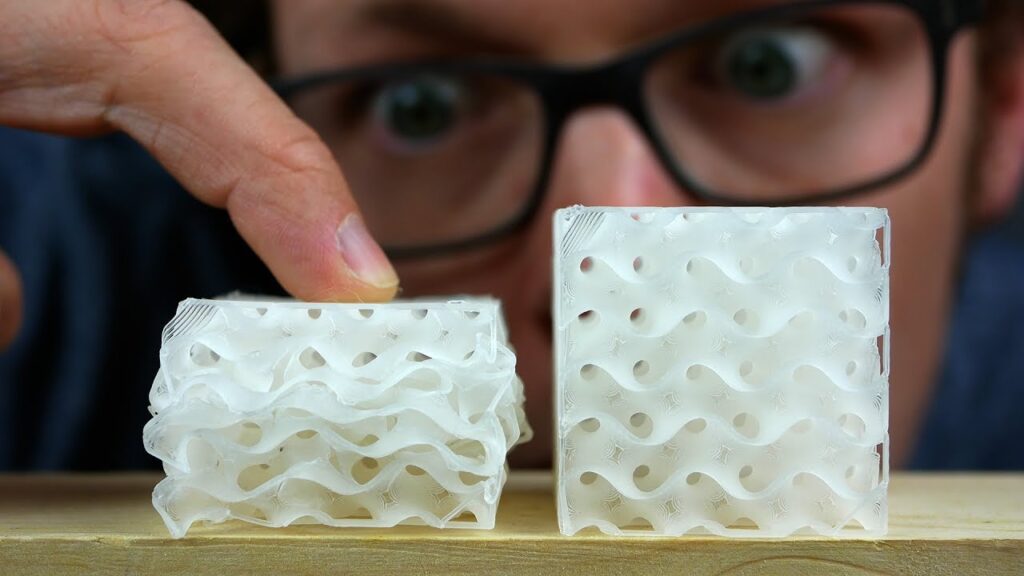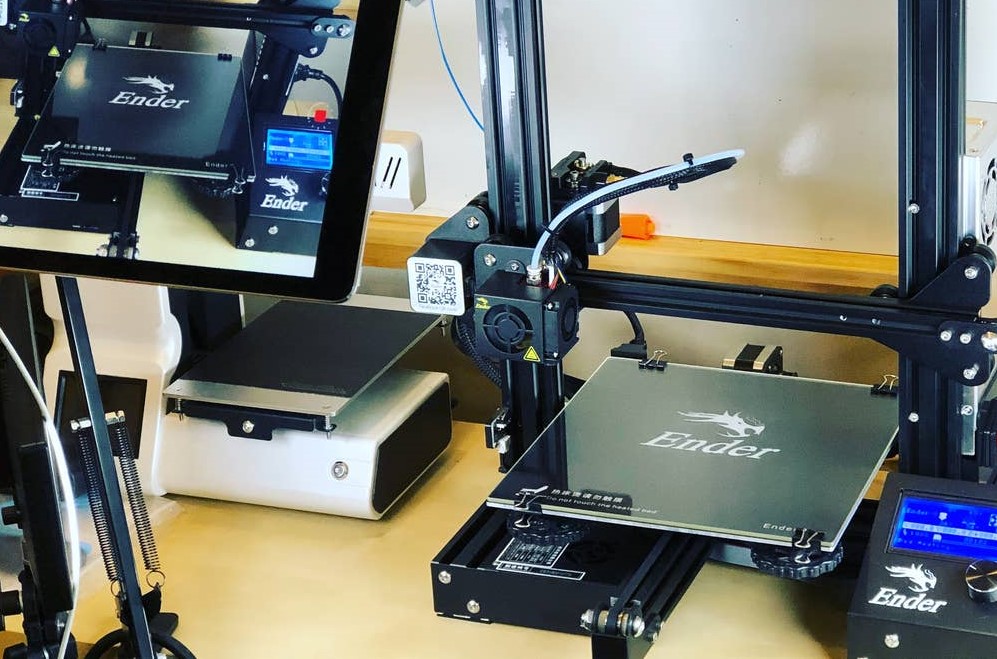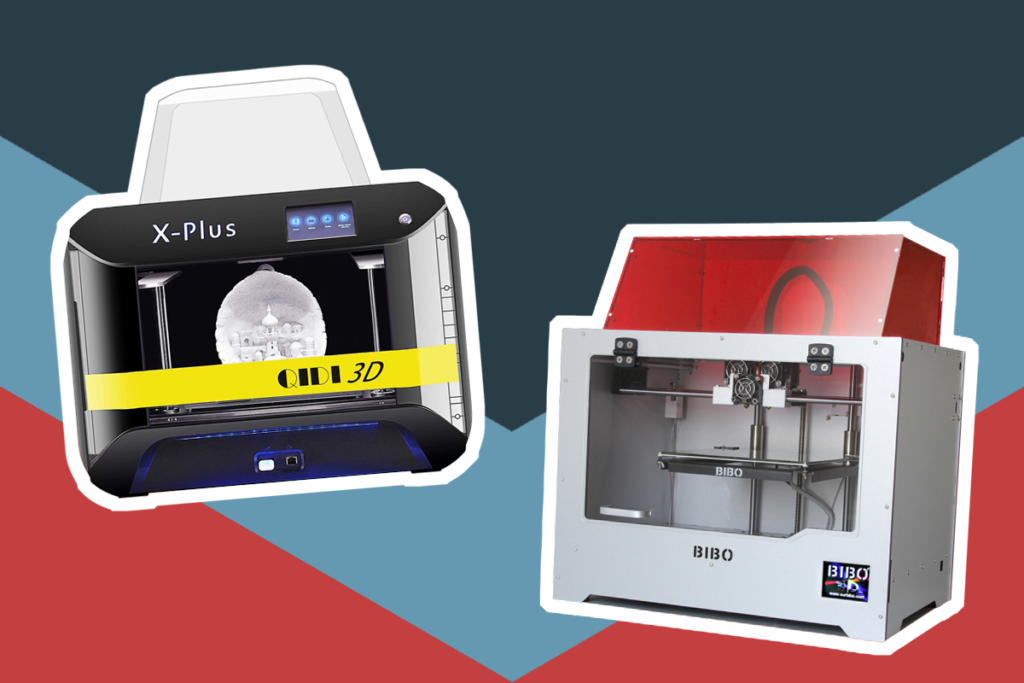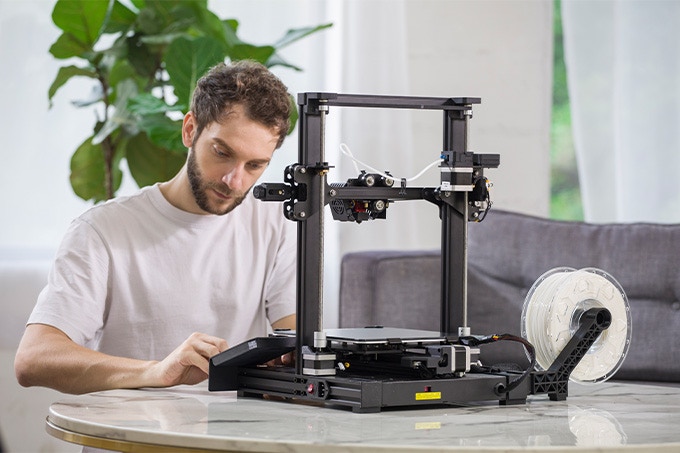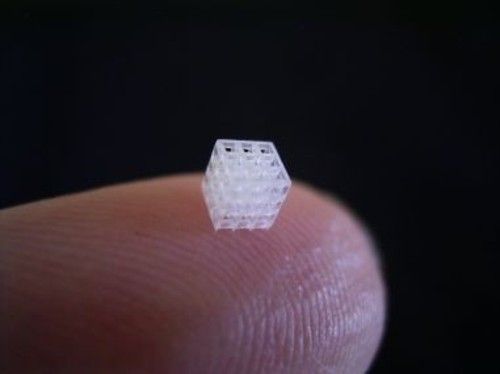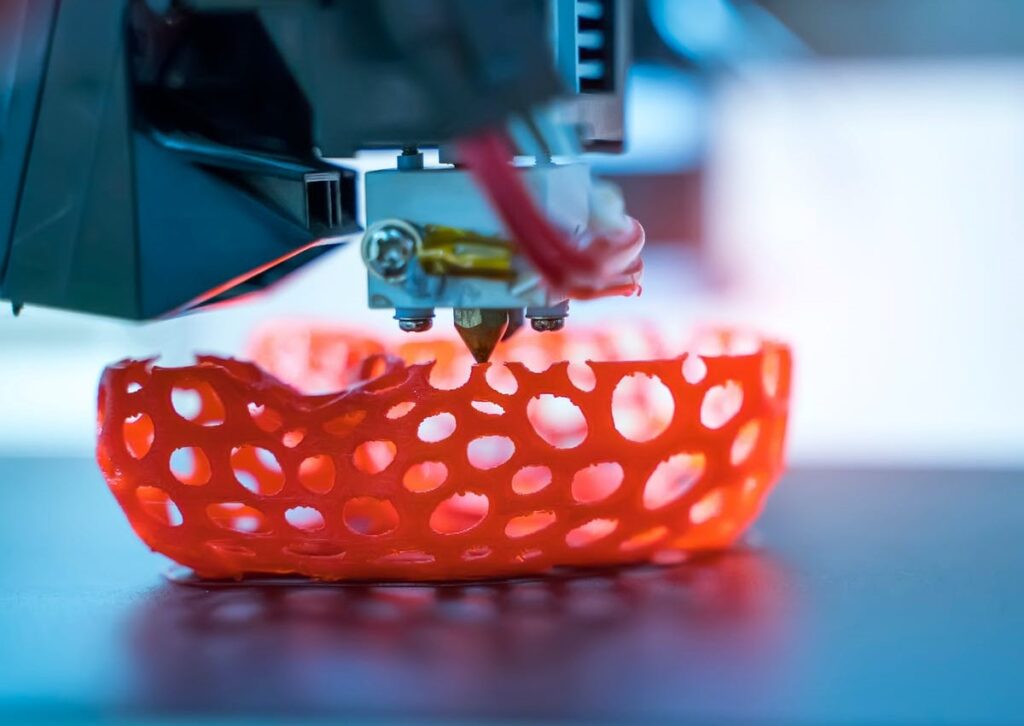
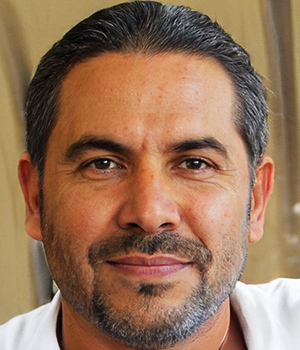
Interested in making unique cookies and treats for the quickly approaching holiday season? Basic cookie cutters won’t cut it (pun intended). 3-D cookie-cutter printers are the trick to dazzling fun in the kitchen. Even if you don’t know a thing about 3-D printing, we have made it easy for you in this article. 3-D printing might seem hard for people who have never tried it before. However, with the right printer, it’s actually extremely easy.
In this article, we have reviewed 6 of the best 3-D printers for cookie cutters. In our opinion, they are the best choices if you want to get into cookie cutting for the first time or have years of experience with 3-D printers. We made sure to include features like printing technology and support materials for each printer to help you better understand the product. We also reviewed printers based on their print speed and their build volume.
This 3-D printer looks small and simple, but it has all the best features needed. In our opinion, it’s the best 3-D printer for cookie cutters. There’s no need to assemble it, and optional auto power-off features make it safe to use around children. The automatic sensor also makes it easy to know when the filament has run out.
Any Cubic has several different models of 3-D printing, but this upgraded option is different in several ways. The upgraded fan improves printing stability and offers better balance correction. The level knobs have also been upgraded. AnyCubic advertises that this makes it 60% easier to level than other 3-D printers.
The new 32-bit motherboard and the high-performance Cortex-M3 architecture make the machine easy to control. With the new technology, it also has a faster computing speed and a smoother system. Accurate and silent printing is possible through the new TMC2209 silent driver.
ANYCUBIC has many different models of printers. The Vyper model stands out for several reasons. Compared to other models, it has auto-leveling. We found this saves time when printing your cookie cutters. The assembly doesn’t take as long as other models. The touchscreen is much larger at 4.3 inches, and the silent printing is one of a kind.
This printer was designed with high value in mind. It only takes 2 seconds per layer to cure resin which makes your printing efficiency skyrocket. The UV light emission also works with the 2k mono LCD, which makes printing extremely precise. It also supports 12 different languages, perfect for those who want to work in their native language.
This upgraded model from ELEGOO has a four times longer lifespan and two times faster printing speeds than the regular base model that’s RGB LCD. The platform has also been upgraded to aluminum with a resin vat. The light source has also been upgraded to the COB, which makes printing come out even better than before. It still has the .stl file but with an 8 times anti-aliasing function.
A portable and budget 3-D printer with all the basic features you need to make the best cookie cutters. The touchscreen is adaptive with easy-to-use on-screen prompts. Slicing can be done with Cura or other slicing software, so it’s adaptable and easy to use. The USB connections make it stable and faster to print than other printers.
The Mini Delta V2 is an update of the bestselling Mini Delta 3D Printer. It comes with various upgrades as requested by users and customers. The touch screen is larger and more adaptive. The leveling system is updated to auto-leveling, which makes printing quicker and simpler. The driver motor has also been updated to 30dBA, so the machine is much quieter than the older models.
If you plan to use your 3-D printer to make cookie cutters and print with children, this is one of the best choices. Many schoolteachers also find it perfect for bringing into the classroom and making cool items. It supports ABS and PLA filaments. It has a large touch screen, metal platform support, a removable plate, and a turbofan that blows on all four sides. The dual extruder assembly supports double color printing.
This is an upgraded model from the basic X model. It now has a dual extruder assembly that has higher precision and is more effective at preventing nozzle clogging. PLA filaments can also be cooled much easier because of the blowing turbofan. The heating bed has been upgraded to aviation aluminum and CNC machined aluminum alloy. The plate can also be bent now, which makes it easier to remove products without messing them up.
This printer is one of the easiest to clean because of the detachable nozzle and removable build plate. It’s compatible with many filaments, including PLA, high-speed PLA, PLA color change, wood ABS, ABS pro, ultra-strong PLA, and metal-filled filaments. The full-color touch screen is easy to use and responds quickly when you press the buttons. The nozzle heats up super quick, going up to 200 degrees Celsius in 50 seconds. No leveling of the plate is required, and the noise level is extremely quiet at only 45 decibels.
Flash Forge is well-known in the 3-D printer business and has many different models out there to choose from. This Lite version, though, has some differences that should be noted. It’s only compatible with ABS and PLA, while other models can also use PC and PETG. It still has some of the other features as other models, though, including the free slicing software, WIFI, and an LCD touchscreen.
Now that we’ve explained the best features of our favorite 3-D printers for cooking cutters, you might be wondering which one is best for you. Choosing a printer for your cookie cutters can be difficult if you’re not sure what to look for you. In our opinion, these are the most important features to look for that will make your printing experience much easier.
When considering a 3D printer for cookie cutters, you should always make sure it’s suitable for food-safe filaments such as PLA and PETG. They must also be accurate enough to print the smoothest surface possible.
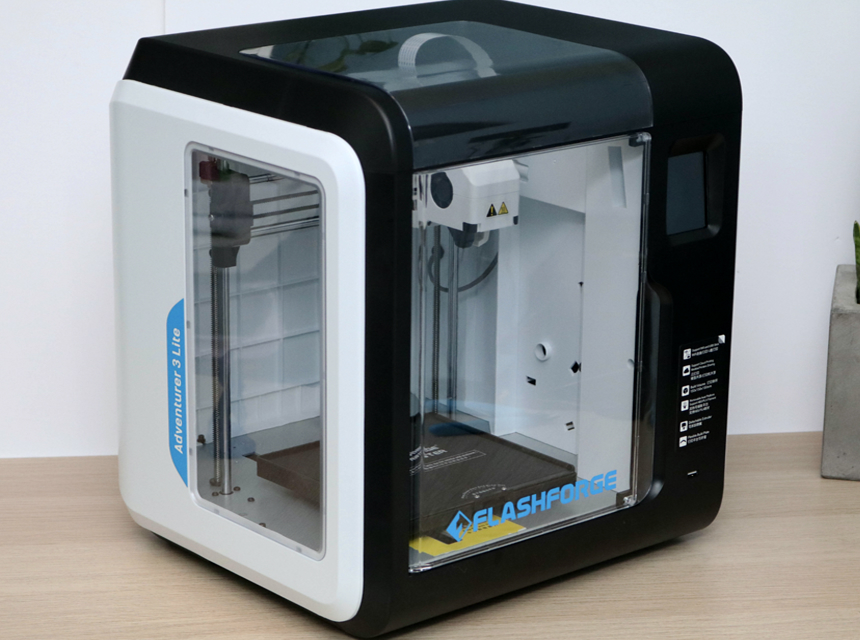
While every 3-D printer is different, there are some features across the board that we look at when recommending and reviewing products. Here are the most important features Trusted Source 3D printing: 'You can make any product in any location' 3D printing in metal has been happening for years. But now a company in the US is pioneering techniques to mass produce essential parts for machines more quickly and cheaply. www.bbc.com and the ones you should consider before buying a printer.
There are several different kinds of printing technology when it comes to 3-D printers. Some are better for cookie cutters than others. The main technology is FDM or Fused Deposition Modeling. They might also be caused by fused filament fabrication or FFF. These extrude clay or concrete. This means they can print desserts like chocolate, printed organs with live cells in bio gel, and other things like that.
A spool of filament will be loaded into the printer and fed through the printer nozzle. The nozzle is then heated to the temperature you program. The motor will push through the filament through the heated nozzle. Then it will melt.
These are the dimensions of the space into which 3D prints can be produced. As we were reviewing the 3-D printers, we came to realize that the build area stated by the manufacturer is not actually the functional building area you will have. The maximum print size listed is also not usually accurate because you have to take into account the other factors that take up space, such as the extruders.
The resolution will affect your print’s level of detail. Since there are 3 dimensions to consider, the layer resolution can be difficult to comprehend. You will need to pick a printer that performs well in all 3 dimensions in order to get the best results.
When looking at specs, you might see a few several different numbers. The minimum feature size will be the XY plane, and the Z-axis resolution will be the layer thickness or layer height.
The XY plane is more important because it’s measured via microscopic imaging. The Z-axis resolution is determined easily, though, and might be more often reported than the XY plane measurements.
There are 3 main resolutions you can check for:
The lower number, the better the detail.
The supporting materials you need your printer to have will depend on what you’re making. In this case, if you are only making cookie cutters, there are a few supporting materials you should check for when buying a 3-D printer.
You only need one software to operate a 3-D printer but having more than one can be useful. You have to have slicing software. This is what will convert your digital 3D models into printing instructions. It will allow the machine to code the instructions and make the correct product. Cura is one of the most popular slicing software for cookie cutters, and it can be used with ANYCUBIC 4Max Pro 2.0. Other common ones include Slic3r and Simplify 3D. If you plan to use your printer for other uses, you can also look into commercial software and modeling software. Trusted Source 3-D printing can make everyone a designer - The Washington Post “Printer” is a slightly misleading term for the apparatus. It doesn’t spit out paper copies; it slowly builds plastic ones. A nozzle extrudes ivory-colored plastic, layer by sixteenth-of-an-inch layer, to fabricate an item designed with software. www.washingtonpost.com
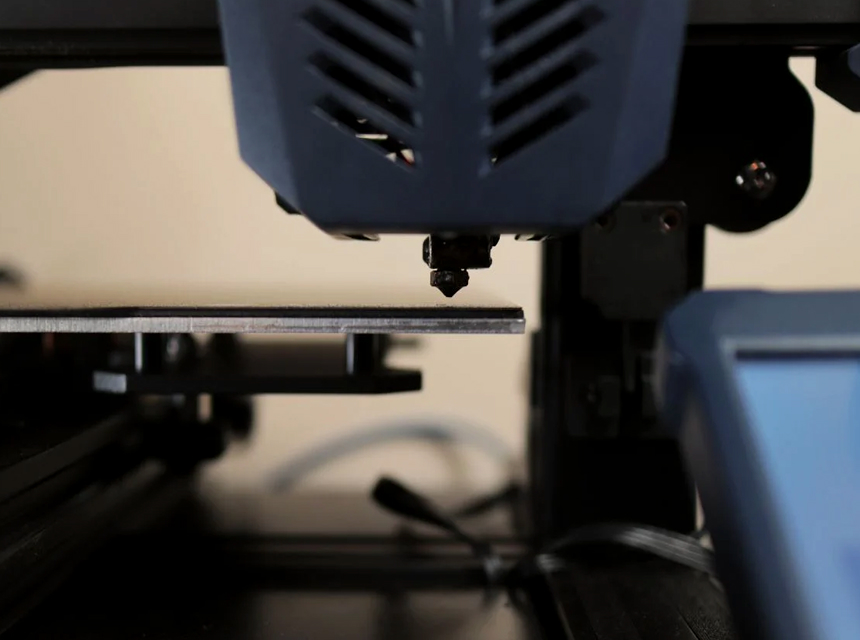
The nozzle diameter is important because you need to have a size that can give you good attention to detail but also print at high speeds. The thinner the layer height, the better the detail will be. Thicker layer heights will print faster, though. Common nozzle sizes include 0.4mm, 0.3mm, 0.25mm and 0.2mm.
The print speed will determine how quickly your cookie cutters can be finished. If you are trying to make many at once or complete a big project, you will need a printer with a faster speed. Print speed will also depend on your filament and slicing software. Most printers should be around 30mm to 90 mm per second to get the most efficient and best results.
While all the printers on this list are some of the best choices on the market, we recommend the ANYCUBIC 4Max Pro 2.0, the ANYCUBIC Vyper, and the ELEGOO Resin 3D Printer Mars 2 Pro Mono overall.
The ANYCUBIC 4Max Pro 2.0 is the best choice if you want an easy-to-use printer with an automatic filament feeder, automatic on/off features, and a large volume with great adhesion. The sensors and the automatic alarms also make it easy to use around children.
The ANYCUBIC Vyper is a solid choice if you want a silent machine that it’s easy to control with the dual extruders and the fast-computing speed. Choose the ELEGOO Resin mars 2 Pro if you are on a stricter budget but still want a great printer with all the basic features you need.
Now that we’ve reviewed the best 3d printer for cookie cutters thoroughly, we hope that you have a good idea of the one you should purchase that’s best for you. Knowing the features beforehand is important so you know what your printer can do and how to use it.
